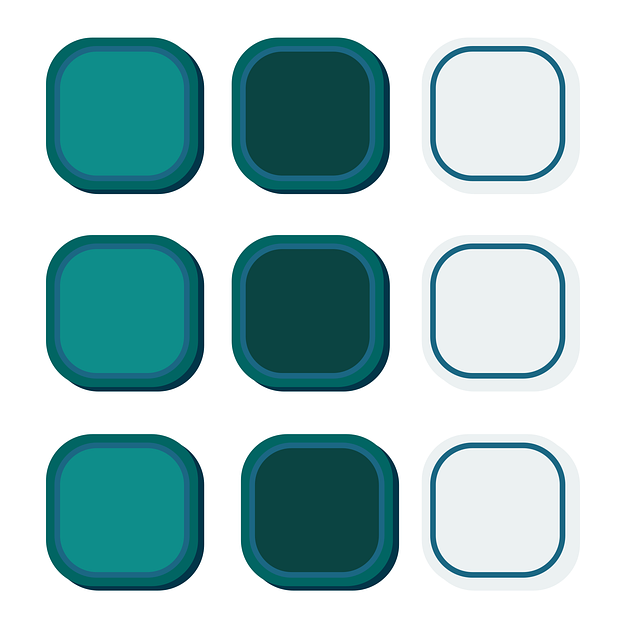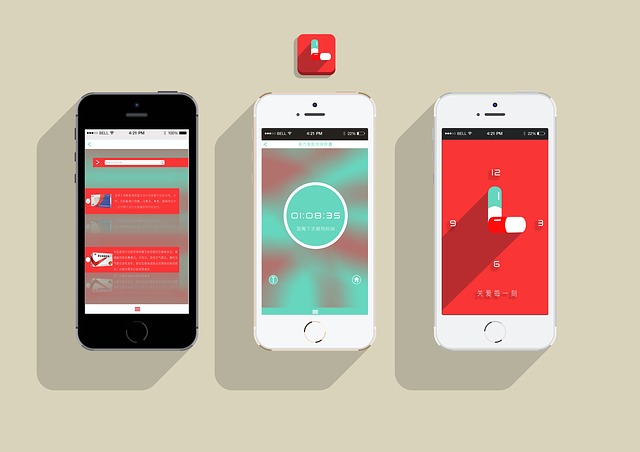UI design is a multifaceted discipline that combines aesthetics, functionality, and user understanding to create captivating web experiences. Skilled designers leverage tools like Figma, Sketch, and Adobe XD to craft intuitive layouts, vibrant colors, and clean typography while adhering to brand guidelines. Beyond visuals, UI design prioritizes usability, accessibility, and information architecture, ensuring websites are easy to navigate and engage users. By incorporating user-centered design principles, empathy mapping, and persona creation, UI designers foster positive interactions, enhance satisfaction, and drive conversions in today's competitive digital landscape. Ultimately, effective UI design is the key to building loyal user communities and achieving success online.
UI/UX Design for Websites: Unlocking Engaging User Experiences
UI design, at its core, is the art of visual communication, shaping how users interact with websites. In this comprehensive guide, we delve into the intricacies of creating user-centric web experiences. From understanding visual elements like typography and color to implementing responsive design, each section equips designers with essential tools. We explore user research, information architecture, wireframing, and prototyping, emphasizing the seamless fusion of aesthetics and functionality. By mastering these UI/UX design principles, professionals can create interfaces that captivate users, enhance engagement, and drive business success.
# UI/UX Design for Websites: A Comprehensive Guide to Creating Engaging User Experiences

UI/UX design for websites is a multifaceted discipline aimed at creating visually appealing and user-friendly interfaces that foster engaging experiences. At its core, UI (user interface) design involves the strategic placement of elements on a webpage, ensuring aesthetics and functionality seamlessly integrate. Designers leverage tools like Figma, Sketch, or Adobe XD to craft intuitive layouts, vibrant color palettes, and clean typography that captivate users while adhering to brand guidelines.
Effective UX (user experience) design goes beyond visual appeal, focusing on understanding user needs, behaviors, and pain points. It involves conducting user research, creating user personas, and designing wireframes to outline the site’s structure and functionality. By prioritizing usability, accessibility, and information architecture, UX designers ensure websites are not just visually appealing but also easy to navigate, ultimately driving user engagement and conversions.
<section id="understanding-ui-design–the-art-of-visual-communication“>
Understanding UI Design: The Art of Visual Communication

UI design, or User Interface design, is more than just aesthetics; it’s the art of visual communication that facilitates user interaction with digital products. Skilled UI designers create visually appealing interfaces that not only capture users’ attention but also guide them intuitively through various functionalities. The goal is to ensure a seamless and enjoyable experience, fostering user engagement and loyalty.
Effective UI design leverages typography, color theory, spacing, and layout to convey information clearly. It involves meticulous consideration of every element on the screen, from button placements to icon designs, ensuring they serve specific purposes and enhance usability. By understanding user behaviors and preferences, designers can create interfaces that not only look stunning but also offer intuitive navigation, ultimately elevating user satisfaction and interaction.
– Define UI design and its role in modern web development.

User Interface (UI) design is a pivotal aspect of modern web development, focusing on the visual elements and interactive parts that users directly interact with on a website or application. It involves crafting intuitive and aesthetically pleasing layouts, buttons, forms, icons, and other components to create a seamless user experience. A well-designed UI not only captivates users but also facilitates their interaction, ensuring they can navigate and understand the digital environment effortlessly.
In today’s competitive online landscape, effective UI design is essential for capturing and retaining user interest. It plays a critical role in conveying brand identity, building trust, and promoting user engagement. By prioritizing usability, accessibility, and visual harmony, UI designers contribute to higher conversion rates, reduced bounce times, and increased customer satisfaction. Ultimately, an exceptional UI design acts as the gateway to a successful digital presence, fostering meaningful connections between users and brands.
– Discuss visual hierarchy, typography, color theory, and their impact on user engagement.

In UI design, visual hierarchy is a fundamental concept that guides users’ attention through a webpage. By organizing content and elements in a logical manner, designers ensure that users can quickly comprehend the site’s purpose and navigate efficiently. Well-designed visual hierarchy uses size, contrast, spacing, and placement to create a clear path for the user’s eye, directing them towards key information and calls to action. This strategy enhances user engagement by simplifying complex interfaces, making it easier for visitors to find what they need.
Typography, color theory, and their interplay play a significant role in UI/UX design. Typography choices influence readability and content hierarchy, while color theory ensures visual appeal and brand recognition. Careful consideration of font styles, sizes, line spacing, and colors creates an aesthetically pleasing interface that aligns with the website’s purpose and target audience. Effective use of typography and color can subtly guide users, emphasize important elements, and foster a sense of consistency throughout the user experience, thereby increasing engagement and satisfaction.
– Explore how well-designed interfaces enhance user satisfaction.

A well-designed UI (User Interface) is a powerful tool for enhancing user satisfaction and engagement on websites. When interfaces are intuitive, visually appealing, and tailored to users’ needs, it significantly improves their overall experience. Well-designed elements like clear navigation, easily readable typography, and responsive layouts enable users to effortlessly interact with the site, completing tasks efficiently and enjoying the process. This leads to higher user satisfaction, longer sessions, and increased likelihood of returning to the website.
In today’s competitive digital landscape, exceptional UI design is no longer a luxury but a necessity. Users have come to expect seamless and enjoyable interactions from websites, and those that deliver are more likely to capture and retain their attention. By focusing on user-centric design principles, designers can create interfaces that not only look good but also feel intuitive and satisfying to use, fostering positive relationships between users and the digital products they engage with.
<section id="user-centered-design–putting-users-at-the-core“>
User-Centered Design: Putting Users at the Core

In the realm of UI/UX design, user-centered design is a philosophy that places the user at the heart of every creation process. It’s not just about building interfaces; it’s about understanding and catering to users’ needs, preferences, and behaviors. By conducting thorough user research, designers can gather valuable insights into their target audience, enabling them to make informed decisions that prioritize usability and accessibility. This approach ensures that the final product not only looks appealing but also feels intuitive and efficient to use, ultimately enhancing user satisfaction and engagement.
User-centered design is a dynamic process that involves continuous iteration based on user feedback. Tools like wireframing, prototyping, and A/B testing are essential in this methodology as they allow designers to visualize concepts, gather real-time feedback, and refine the UI until it meets—and exceeds—user expectations. By keeping users at the core, designers can create digital experiences that not only drive conversions but also foster loyal user communities.
– Emphasize the importance of user research and empathy mapping.

User research is a cornerstone in the development of effective UI/UX design. It involves understanding user needs, behaviors, and pain points through various methods like interviews, surveys, and usability testing. By gaining insights into how users interact with websites, designers can create interfaces that not only look appealing but also serve users’ goals efficiently. Empathy mapping is a powerful tool in this process; it helps designers put themselves in the users’ shoes, visualizing their experiences and emotions during interactions. This empathy allows for more nuanced design decisions, ensuring that the final product feels intuitive and user-friendly, thereby enhancing overall satisfaction and engagement.
Moreover, incorporating user research and empathy mapping into UI design processes enables the creation of inclusive interfaces. By considering diverse user profiles and abilities, designers can address accessibility needs and avoid potential pitfalls like small text or complex navigation. This approach not only broadens the appeal of the website but also ensures legal compliance with accessibility standards, such as WCAG (Web Content Accessibility Guidelines). Effective UI design is thus a blend of aesthetic appeal and functional usability, all rooted in a deep understanding of its intended users.
– Explain the process of creating user personas and their benefits for UI design decisions.

Creating user personas is a fundamental step in the UI/UX design process, offering a structured approach to understanding target audiences. These detailed profiles represent hypothetical users who embody the traits and behaviors of your ideal customers. By developing personas, designers gain valuable insights into users’ needs, preferences, goals, and pain points. This information is crucial for making informed UI design decisions.
Personas provide a human-centric framework that guides the entire design process. They help in personalizing the user experience by ensuring that each design choice aligns with the target audience’s expectations and requirements. With well-crafted personas, designers can create intuitive interfaces, tailored content, and seamless user journeys, ultimately enhancing user satisfaction and engagement, which is key to successful UI design.
